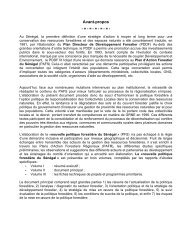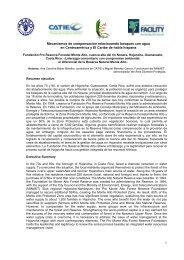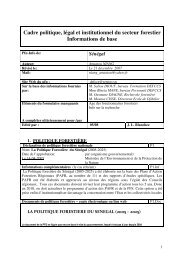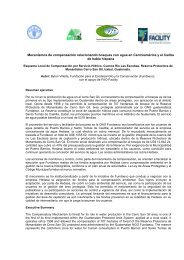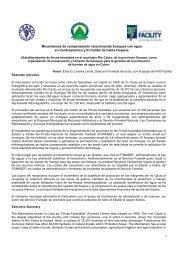2010 Progress Report â Draft - NFP Facility
2010 Progress Report â Draft - NFP Facility
2010 Progress Report â Draft - NFP Facility
Create successful ePaper yourself
Turn your PDF publications into a flip-book with our unique Google optimized e-Paper software.
<strong>2010</strong> <strong>Progress</strong> <strong>Report</strong>Outcome and impact monitoring andevaluation system (OIMES)Result Based Management (RBM) and the OIMES have been continually developed and introduced since2008, and further implemented in <strong>2010</strong>. It has been taken up by many countries as a tool for their ownmonitoring of the nfp process. It has brought insight to the stakeholders on the nfp framework and the realityand status of the nfp in the country.Coaches were trained in <strong>2010</strong> to insert data in the FORIS database (into which OIMES has been set up) onlinking the small grants to the country level nfp assessment (“the matrix”). The indicators of the nfp atnational level are assessed in nfp workshops by stakeholders when discussing progress and defining newpriorities.Distribution by main nfp principles of <strong>Facility</strong> supported activities in <strong>2010</strong>Cluster 1: Country leadership, Cluster 2: Inter and intra-sectoral linkages, Cluster 3: Partnerships andparticipationAs could be expected, support has primarily been provided to the clusters covering partnerships andparticipation and country ownership. It is, however, worth noting that in Asia, the picture looks different.There, the much needed inter- and intra-sectoral linkages have received most of the support.Regarding the impact of <strong>Facility</strong> support on the nfp of partner countries, OIMES can give some indicationsonly at this stage. Only 9 countries (Angola, China, Lesotho, Malawi, Mozambique, Namibia, Nigeria, Paraguayand South Africa) have, so far, completed 2 nfp assessments including the indicators selected for <strong>Facility</strong>support. This small sample, nine countries, has given the following result with respect to <strong>Facility</strong> support tonfp implementation (see graph below).The graph shows that in those 9 countries, 81% of <strong>Facility</strong> supported activities have a focuson areas in which countries have difficulties.About 20% of activities supported are in areasalready showing a positive trend. Data frommany more countries will become availableduring 2011, and a thorough analysis of theimpact will then be undertaken. However,more analysis based on OIMES and othersurveys will be presented in the newpublication “nfps in practice” to be published inthe first half of 2011. See also the “<strong>NFP</strong><strong>Facility</strong>-Beyond 2012, Background andProposal” document.Past trend of nfp implementation in 9countries supported by the <strong>Facility</strong> in <strong>2010</strong>9



